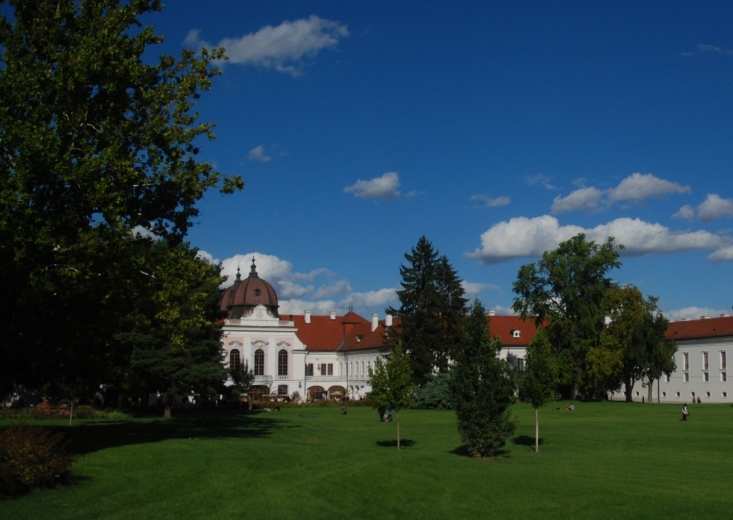The renovation of the Grassalkovich (Royal) Castle in Gödöllő began in 1990. The so-called Upper Park is an integral part of the complex. It was recently declared a protected area on the basis of an individual proposal.
Legislation declaring it protected: Decree 7/1998 (III. 18.) of the Royal PPA on the Establishment of the Gödöllő Royal Castle Park Nature Reserve. The municipality concerned is Gödöllő, covering an area of 26,1 hectares.
The aim of the declaration of protection is to preserve the characteristic landscape values of the park with its rich cultural history, the planted woody flora and, in the parts of the area reserved as an English park, the species representing the original flora.
In addition to its cultural history and landscape values, the park is also home to zoological and botanical interest.
In the Upper Park, the garden pavilion and fountain, built in the last century and now in ruins, and the palm house, restored to its original splendour, are architectural assets. From a cultural and historical point of view, the traces of the different 'fashions' of park construction from the time the park was built (by Antal Grassalkovich at the end of the 18th century) to the beginning of the 20th century are still visible in the structure and vegetation of the garden. The park is of outstanding historical value as a resting and residence place for important personalities who visited the park (e.g. Maria Theresa, Lajos Kossuth, Franz Joseph, Queen Elisabeth, Miklós Horthy, etc.).
Among the planted vegetation, trees of great value are those of 100 years or more of age (giant sequoia (trunk height at breast height - 374 cm), Scots pine, fern, Japanese acacia, western plane, and a double white chestnut tree line of 80 (originally 120) trees.
The original, valuable woodland communities (small-leaved lime-oak, pearl-oak) are still present in the rear part of the park (reserved as an English park), with their representatives of the original vegetation (e.g. pedunculate oak, pedunculate oak, mossy oak, small-leaved lime, whip-oak, hollyhock, common ginger root, lily of the valley, yellow henbane). In addition, there are also patches of grassland (e.g. sand garganey, Hungarian carnation, meadow plantain, sage of the Liget, Hungarian sorrel), similar to the sandy shrubs around Gödöllő, which still contain the protected Janka warbler and Buda imola. According to surveys, the number of woody plant species exceeds 120, and the number of herbaceous plant species is even higher.
The site's songbird fauna is rich due to its links with the surrounding woodland and wetlands. Rarer species (e.g. bone-feathered, gadwall, pocket gull, etc.) are also present during feeding and migration.
The park in the centre of Gödöllő is a distinctive and dominant feature of the city's landscape. The park, which was created on the site of a former forest, plays an important role in preserving the city's mesoclimate and purifying the air.
Today, the Royal Castle and the park surrounding it have become one of our most visited historical sites. Further reconstruction work is essential for both the built and natural heritage.
